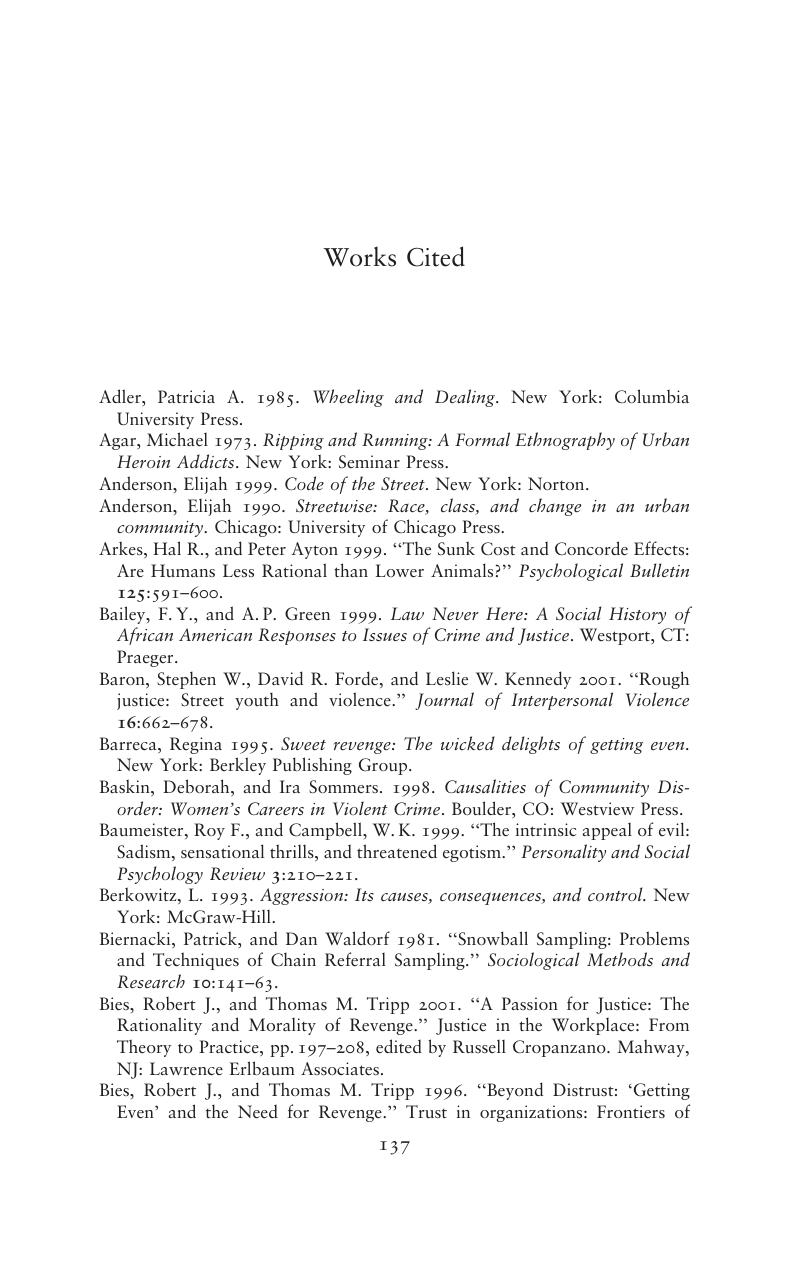Book contents
Works Cited
Published online by Cambridge University Press: 05 June 2012
Summary

- Type
- Chapter
- Information
- Street JusticeRetaliation in the Criminal Underworld, pp. 137 - 148Publisher: Cambridge University PressPrint publication year: 2006

